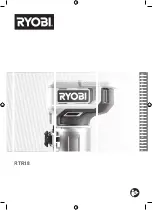
In-building Antennas
MA 850A1A1 Installation and Configuration Guide
12
2.4 In-building
Antennas
The in-building antennas are connected to the coaxial cable distribution system by jumper cables
at various points. The antennas will be mounted on the ceiling tiles and should be exposed. All
in-building antenna installations will be such that it will not interfere with indoor traffic and will
not enable any person to touch the antennas.
•
Wideband antennas omni – up to 2.5GHz to support 802.11b/g, up to 6GHz to support
802.11a. Use antennas listed in section
•
50 ohm impedance
2.4.1 Antenna
Types
These antenna types are to be used with the MA-850A1 device.
NOTE:
If your installation distributes 802.11b/g only, you may use any of the first three vendor
types of listed antennas: Mars Antennas, Cellwave or Antenna Specialists. For 802.11a/b/g
service distribution, use antennas from the second table below.
Table
2-3.
Antennas to be used for 802.11b/g
Vendor
Catalog number
Gain [dBi]
Mars Antennas
MA-CM36-15
2 low band
3-4 high band
5 WLAN 802.11b
Cellwave A08818DC00-28T0
2.1
Antenna Specialists
ASP-3561
2
Table
2-4. Antennas to be used for 802.11b/g/a
Vendor
Catalog number
Gain [dBi]
Huber+Suhner
SWA 0859/360/4/10/V
7 dBi
Mars Antennas
MA-CP26-2X
2 low band
3-4 high band
6 WLAN 802.11a
2.4.2 Antenna
Connections
•
50
Ω
, 1/2” or 3/8” Plenum coax cables
•
Max cable length (typically): 150’
•
50 ohm terminator on unused connections
•
For short jumpers (to MRC antenna ports): RG223 2 ft or 10 ft male-to-male coax
jumpers
















































